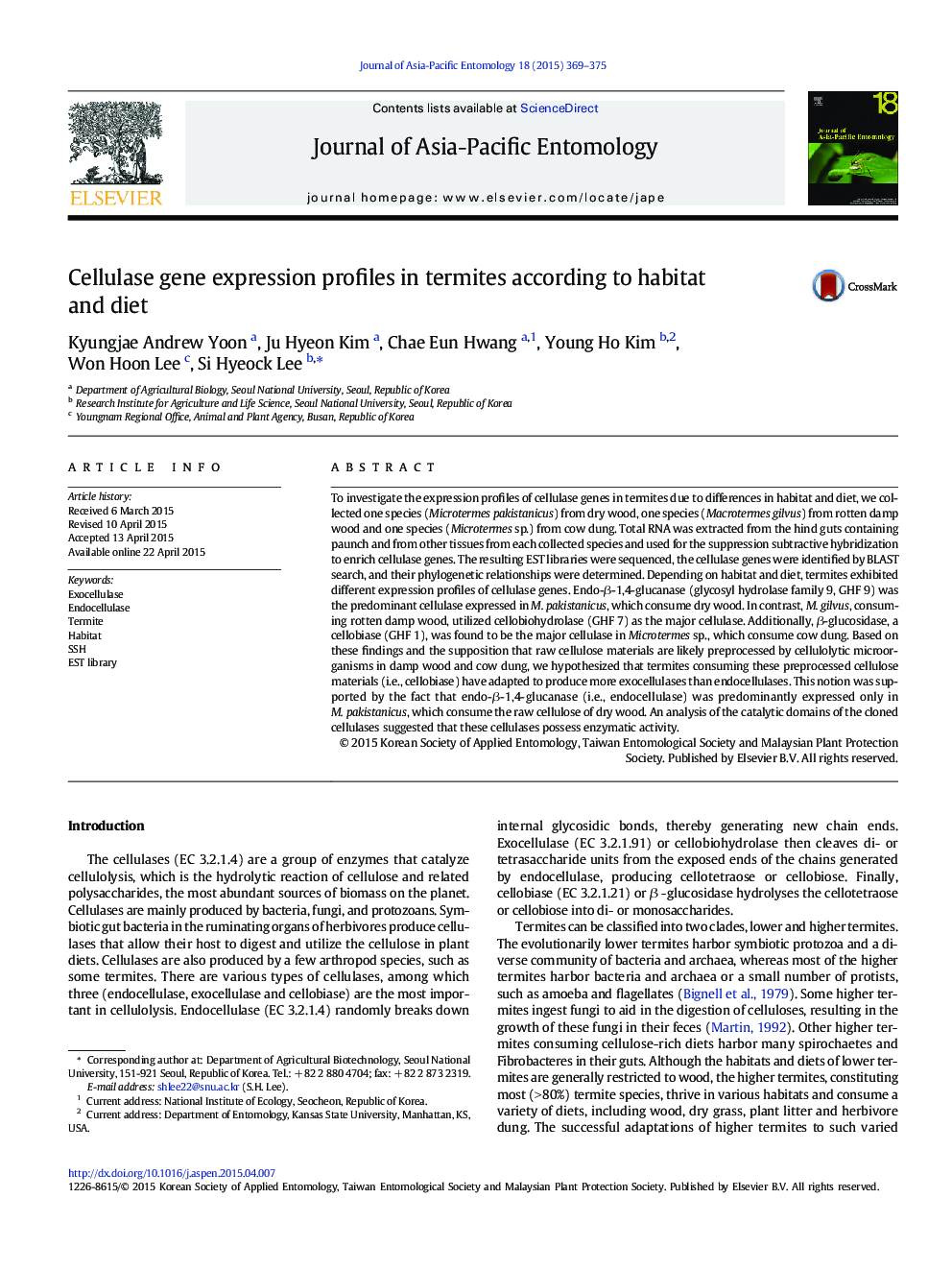| Article ID | Journal | Published Year | Pages | File Type |
|---|---|---|---|---|
| 4524658 | Journal of Asia-Pacific Entomology | 2015 | 7 Pages |
•Three higher termite species were collected from dry wood, rotten damp wood, and cow dung.•Predominant cellulase genes expressed in the termite hindguts were identified by SSH.•Depending on habit and diet, termites exhibited different expression profiles of cellulase genes.•Endocellulase was the predominant cellulase in the dry wood-consuming M. pakistanicus.•Exocellulase was the predominant cellulase in both damp wood- or cow dung-consuming termite.
To investigate the expression profiles of cellulase genes in termites due to differences in habitat and diet, we collected one species (Microtermes pakistanicus) from dry wood, one species (Macrotermes gilvus) from rotten damp wood and one species (Microtermes sp.) from cow dung. Total RNA was extracted from the hind guts containing paunch and from other tissues from each collected species and used for the suppression subtractive hybridization to enrich cellulase genes. The resulting EST libraries were sequenced, the cellulase genes were identified by BLAST search, and their phylogenetic relationships were determined. Depending on habitat and diet, termites exhibited different expression profiles of cellulase genes. Endo-β-1,4-glucanase (glycosyl hydrolase family 9, GHF 9) was the predominant cellulase expressed in M. pakistanicus, which consume dry wood. In contrast, M. gilvus, consuming rotten damp wood, utilized cellobiohydrolase (GHF 7) as the major cellulase. Additionally, β-glucosidase, a cellobiase (GHF 1), was found to be the major cellulase in Microtermes sp., which consume cow dung. Based on these findings and the supposition that raw cellulose materials are likely preprocessed by cellulolytic microorganisms in damp wood and cow dung, we hypothesized that termites consuming these preprocessed cellulose materials (i.e., cellobiase) have adapted to produce more exocellulases than endocellulases. This notion was supported by the fact that endo-β-1,4-glucanase (i.e., endocellulase) was predominantly expressed only in M. pakistanicus, which consume the raw cellulose of dry wood. An analysis of the catalytic domains of the cloned cellulases suggested that these cellulases possess enzymatic activity.
Graphical abstractFigure optionsDownload full-size imageDownload as PowerPoint slide
